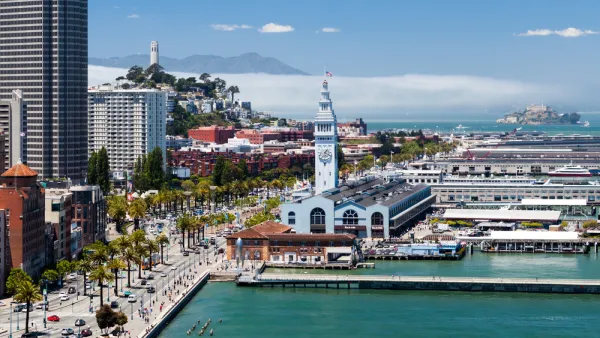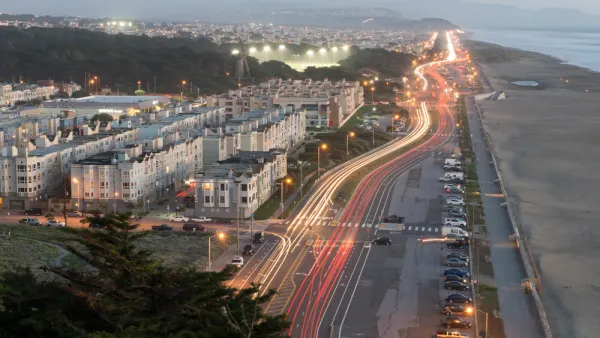As climate change accelerates coastal erosion across the continent, officials everywhere look to San Francisco to see how it will stem the tide, Felicity Barringer reports.
On San Francisco's 3.5-mile-long Ocean Beach, the very same waves that beckon tourists and surfers to the West Coast are slowly chipping the shore away. While erosion "is a perennial issue for beachfront communities," Ocean Beach is especially sensitive: unabated, the encroaching waves threaten to destroy critical infrastructure, including the Great Highway, a wastewater treatment plant, and a 14-foot-wide stormdrain pipe.
It may take some time, but the consequences are expected to be severe, and worsened by rising sea levels due to climate change. "Researchers warned in two new studies that severe coastal flooding could occur regularly in the United States by the middle of the century and that California would be among the states most affected," Barringer notes.
For officials in San Francisco, the options are limited: either reinforce the beach with walls and riprap, build it back up with more sand, or retreat altogether. Stakeholders are divided over these solutions, with each costing on the order of tens of millions of dollars. But a study by the San Francisco Planning and Urban Research Association "projects that sea-level rise there could impose costs of more than $650 million by 2100 if nothing is done."
Barringer summarizes a report by economists at San Francisco State University, writing that "Communities can either plan for the long term or improvise, storm by storm, until ad hoc solutions are inadequate."
FULL STORY: Both Coasts Watch Closely as San Francisco Faces Erosion

National Parks Layoffs Will Cause Communities to Lose Billions
Thousands of essential park workers were laid off this week, just before the busy spring break season.

Retro-silient?: America’s First “Eco-burb,” The Woodlands Turns 50
A master-planned community north of Houston offers lessons on green infrastructure and resilient design, but falls short of its founder’s lofty affordability and walkability goals.

Delivering for America Plan Will Downgrade Mail Service in at Least 49.5 Percent of Zip Codes
Republican and Democrat lawmakers criticize the plan for its disproportionate negative impact on rural communities.

Test News Post 1
This is a summary

Test News Headline 46
Test for the image on the front page.

Balancing Bombs and Butterflies: How the National Guard Protects a Rare Species
The National Guard at Fort Indiantown Gap uses GIS technology and land management strategies to balance military training with conservation efforts, ensuring the survival of the rare eastern regal fritillary butterfly.
Urban Design for Planners 1: Software Tools
This six-course series explores essential urban design concepts using open source software and equips planners with the tools they need to participate fully in the urban design process.
Planning for Universal Design
Learn the tools for implementing Universal Design in planning regulations.
EMC Planning Group, Inc.
Planetizen
Planetizen
Mpact (formerly Rail~Volution)
Great Falls Development Authority, Inc.
HUDs Office of Policy Development and Research
NYU Wagner Graduate School of Public Service




























